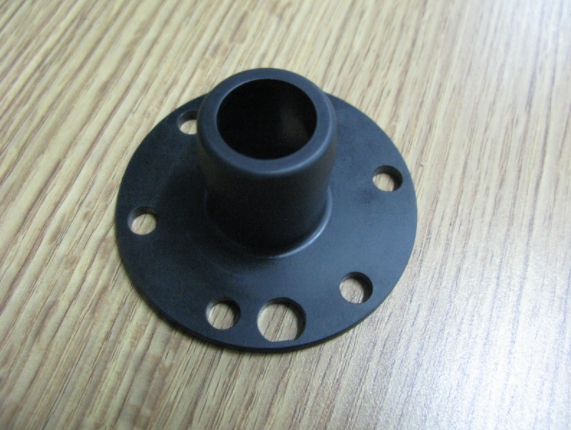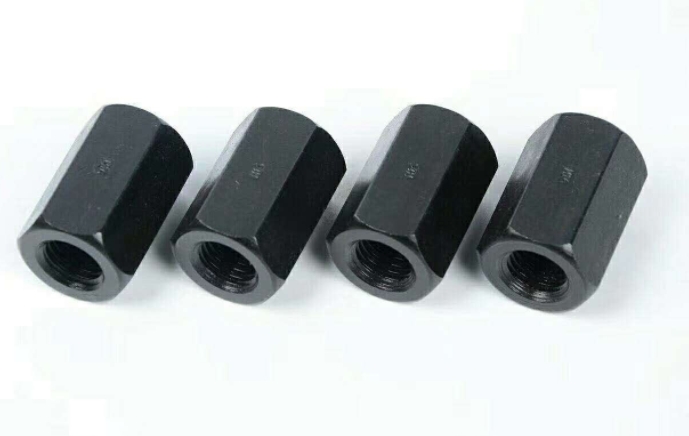Blackening, also known as "iron oxide protective film" or "black oxidation treatment", is a surface treatment method that turns the surface of steel materials black. But it doesn't really 'dye black' the surface. It uses chemical reactions to form a black protective film on the surface. Blackening treatment has many advantages, such as rust prevention, low cost, no size changes, and not easy to peel off.
Blackening treatment refers to the process of forming a black film of Fe304 (iron oxide) on the surface of steel (also known as "black rust") to protect the internal material of the steel from oxidation. In addition to blackening and iron oxide protective film, it is also known as SOB treatment, alkaline blackening treatment, alkaline coloring, etc.
When carrying out blackening treatment, add an oxidant (such as sodium nitrite) or reaction catalyst to a 35-45% sodium hydroxide aqueous solution, then heat it to about 130-150 ℃, and soak the steel parts in it. Then, the iron on the surface of the component is oxidized, producing a substance called sodium ferrite. Subsequently, sodium ferrite is reduced to form a protective film of iron oxide on the surface of the component. Usually, parts are treated with anti rust oil (soaked or coated). Its characteristic is to ultimately achieve an appearance similar to "dyed black".

Improve rust prevention ability
The iron oxide film (black rust) on the surface of the components has a strong and stable state. The presence of this film can to some extent prevent the formation of red rust on the surface of steel (which corrodes the steel into rough rust). In addition, the iron oxide thin film is also porous, characterized by the presence of many small pores and irregularities.
As a post-processing step, impregnating these small holes with anti rust oil can prevent moisture from entering and further improve the anti rust ability. Although this treatment process cannot achieve the same strong rust prevention ability as galvanizing or nickel plating, it is recommended to use blackening treatment if you want to provide some rust prevention protection while giving aesthetics.
In addition, if rust proof oil is used for post-processing, the oil will remain on the surface of the film, which can also improve the sliding performance of tools or mechanical components.

Not easy to peel off
Electroplating and spraying are surface treatment processes that attach other material layers to the surface of components. Therefore, the attached cortex may detach. Blackening treatment is a process that converts only the surface of the component into another substance (iron oxide) through a chemical reaction, and it will not easily peel off. It can be said to be a relatively durable type of surface treatment.
The dimensional accuracy is basically stable
In the blackening process, due to the slow film formation speed, the final film thickness is only about 1-2 µ m. In addition, the film is formed from the surface of the component towards the interior. And the processing temperature is relatively low (below 150 ℃), so there is no need to worry about the parts deforming due to heat. Therefore, there is almost no change in the size of the components before and after blackening treatment. Taking advantage of this advantage, blackening treatment is usually used for components that require high precision.
Beautiful appearance
Blackening treatment can achieve an appearance similar to dyeing black. Its characteristic is that the surface roughness before and after treatment will not change, and the glossy parts before treatment will present a gloss similar to black paint, while the matte parts will present a dull black color. Due to its high-end appearance, it is not only used for industrial products, but also for indoor products and artworks.
Low price
Compared with other surface treatment processes such as electroplating and spraying, the cost of blackening treatment is lower due to the low cost of the treatment solution and the absence of electrodes or fixtures. If a large number of parts are processed at once in the mesh cage, the processing unit price can be further reduced. Even parts with different sizes and shapes can be processed in one go. Therefore, when you want to process various different parts simultaneously at a lower cost, blackening treatment process is a good choice.
When it is necessary to maintain the dimensional accuracy of parts, have a beautiful black surface, and have a certain degree of corrosion resistance, blackening treatment is the most ideal choice.

Specifically, it can be used for steel products such as screws and bolts, various tools, precision mechanical parts, molds, automotive parts, interiors, and artworks. However, although it has certain anti-corrosion performance, its corrosion resistance is poor when used outdoors, so it is not suitable for use in environments with heavy humidity or near the ocean.
Some materials are not suitable for blackening treatment
Blackening treatment is a surface treatment method suitable for iron-based materials. But after processing, castings, quenched parts, wire cut parts, etc. may turn red black instead of pure black. It should also be noted that alloy steels with high chromium, nickel, and other metal contents will appear gray instead of black.
Rust prevention and fuel consumption are prone to rusting
Due to the poor anti rust effect of the iron oxide protective film itself, as mentioned earlier, it is usually necessary to apply anti rust oil to the surface of the protective film for further anti rust treatment. However, once this rust proof oil is depleted, external moisture and air will invade the micropores inside the protective film of iron oxide, causing the formation of red rust. So please realize in advance that the rust prevention ability of blackening treatment is limited.